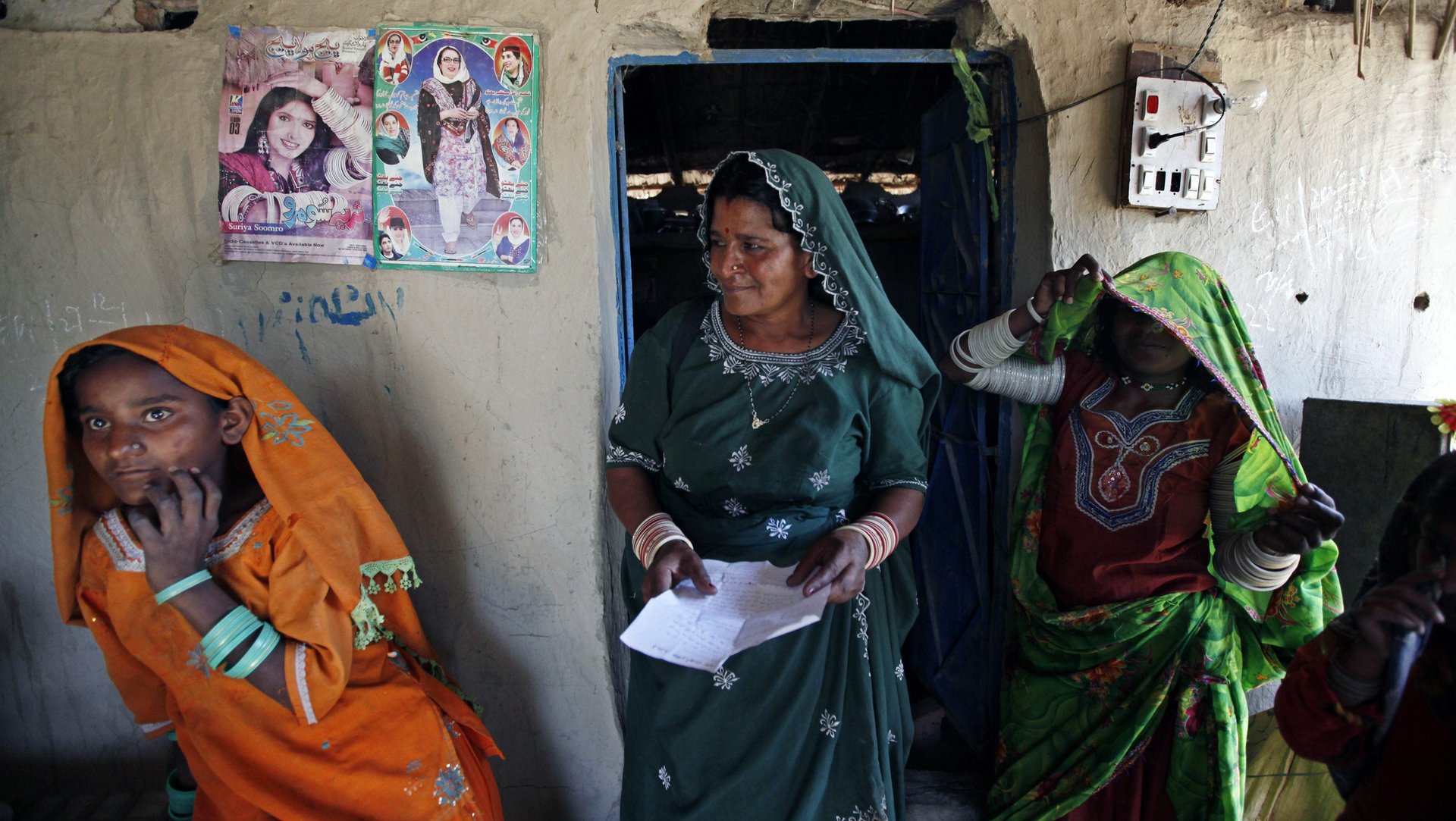One of the biggest problems in rescuing people from modern-day slavery is counting them
More than 40 million people around the world are enslaved, either through forced labor or by forced marriage, a human-rights group estimates. The same organization found there were 45.8 million people enslaved last year, 35.8 million in 2014, and 29.8 million in 2013—making news with these whopping numbers each time.


More than 40 million people around the world are enslaved, either through forced labor or by forced marriage, a human-rights group estimates. The same organization found there were 45.8 million people enslaved last year, 35.8 million in 2014, and 29.8 million in 2013—making news with these whopping numbers each time.
The figures are heartbreaking, yet the fluctuations don’t mean that the enslaved population changes drastically year to year. They show just how hard it is to pin down the data.
Walk Free, the human-rights organization founded by Australian billionaire and philanthropist Andrew Forrest, released its 2017 numbers yesterday (Sept. 19), during the UN general assembly. Identifying the scale of the problem is crucial in order to effectively address it, says Fiona David, Walk Free’s executive director of global research. “Information in the abstract can be interesting, but what you really want is information that can shape your responses so that you can identify victims, prosecute criminals, get people the help they need, and change their situation,” she tells Quartz.
This year’s estimate is part of a different project than from years past. Previously, the estimate was part of the Global Slavery Index, which ranks countries by the proportion of enslaved population. In 2017, the group, along with the UN’s International Labour Organization (ILO) created a global estimate, rather than breaking it down by country. But why the discrepancies in the overall annual numbers?
One answer: Data on modern slavery is hard to capture. Despite the staggering number of 40 million, enslavement is statistically a rare crime, David says. It’s a largely hidden and underreported (sexual exploitation, for instance, follows the same patterns as sexual assault, she adds).
In addition, Walk Free changes its methodology and adds more data points to its research each year. Since not every country can be surveyed, the results from some are extrapolated to countries that are politically similar, or, as is the case this year, are within the same region (after the project first started, a top expert criticized the methodology for being spotty, and for making unsubstantiated extrapolations). Walk Free says that, each year, the number of countries where the group conducts its random-sample surveys via Gallup polling, has increased, allowing more precision.
This year, the organization had survey information from 54 countries, covering about 71,000 respondents (it asks people about their experiences with forced labor and forced marriage, as well as that of family members and people they know). It also used as a 30,000-person database from the International Organization for Migration (IOM) that collects data from victims of human trafficking. Their statistical model was also different than in years past. David says over time, the group has been able to refine its methods and data, comparing the process to improving a scientific instrument.
“The first time you build a magnifying glass, you get a picture than you see with the naked eye, but it might be a bit rough, then you improve your tools over time, you improve your data over time, and over time, your picture gets clearer and clearer, and also you can see more definition in the picture,” she said.